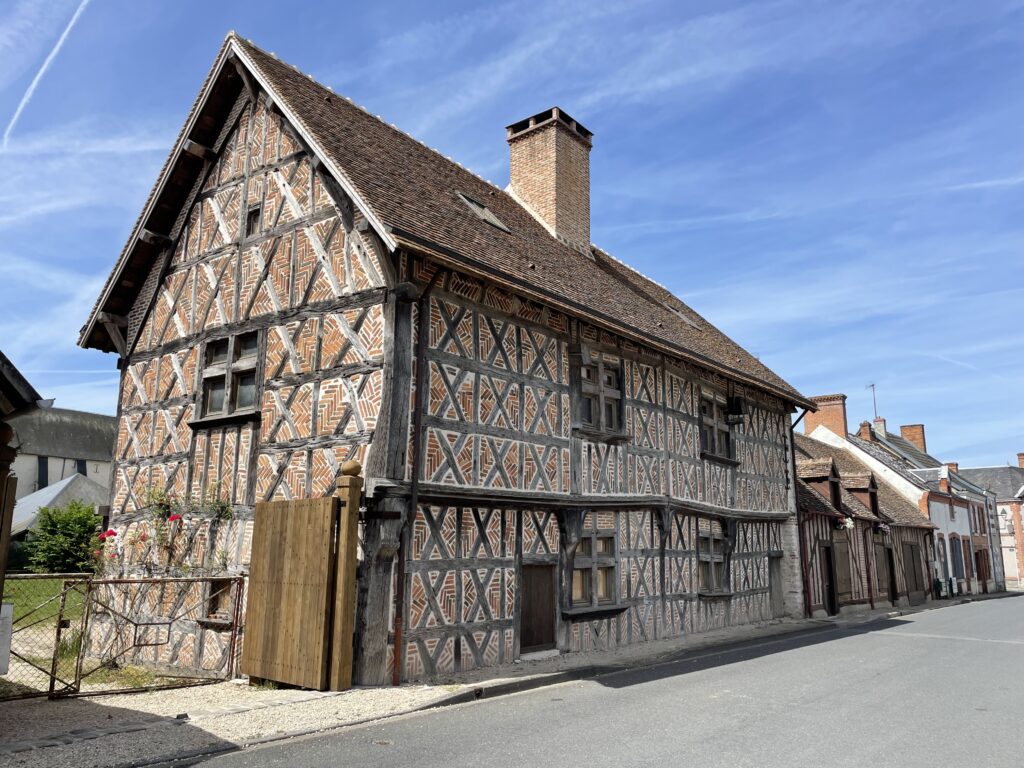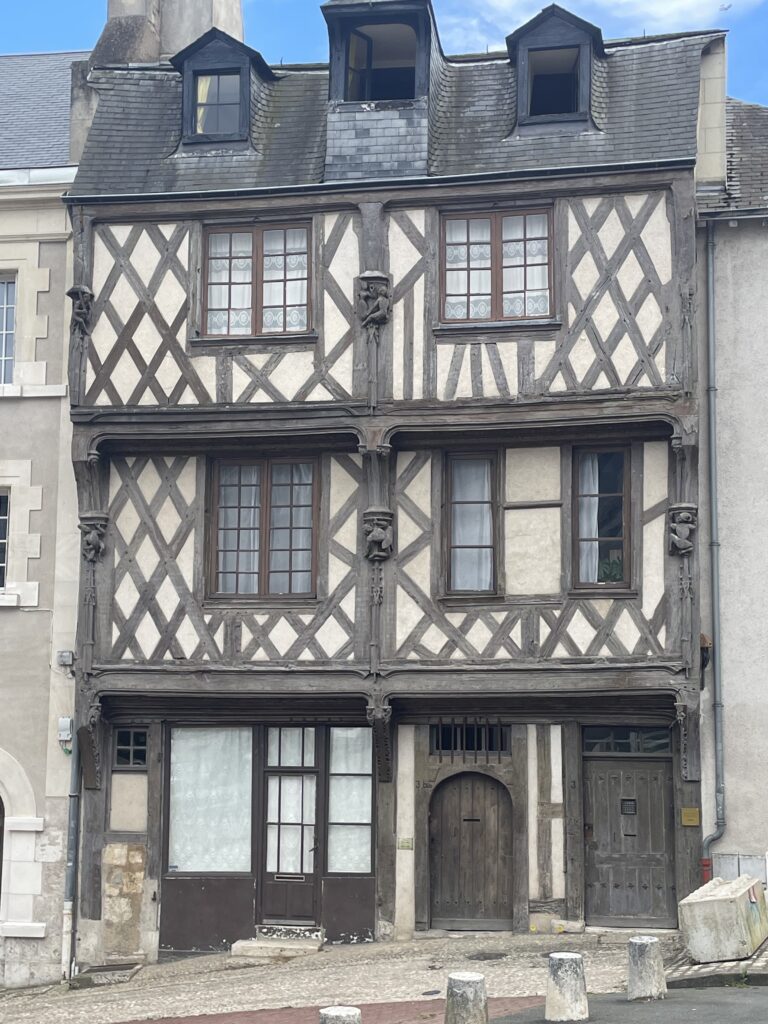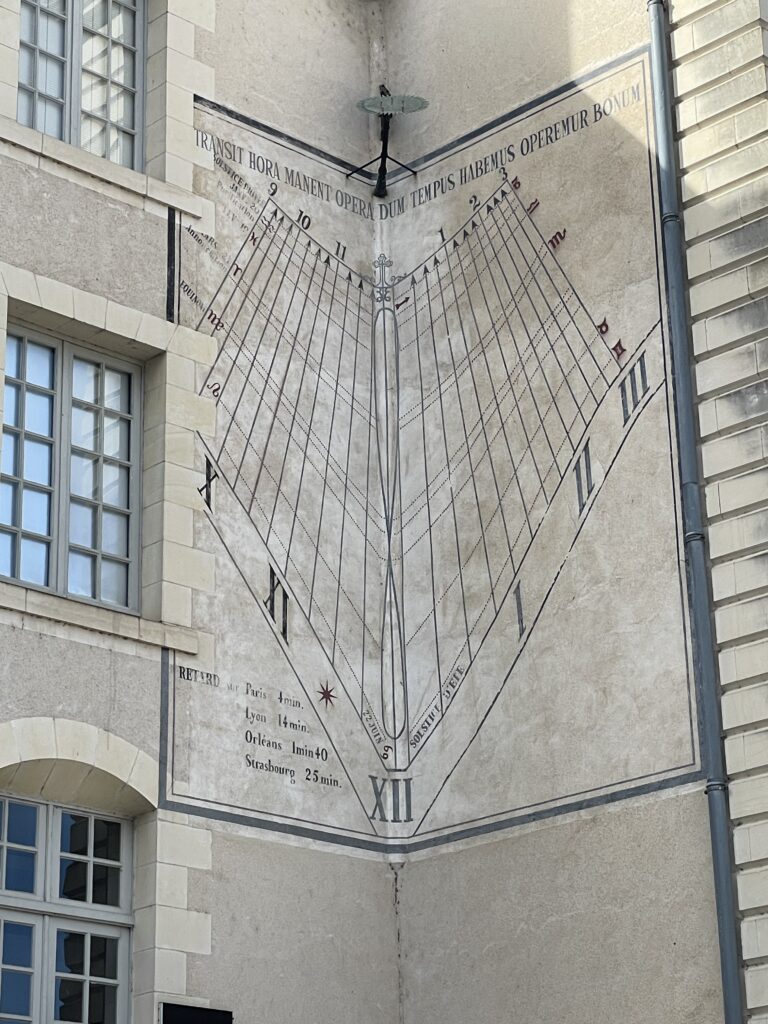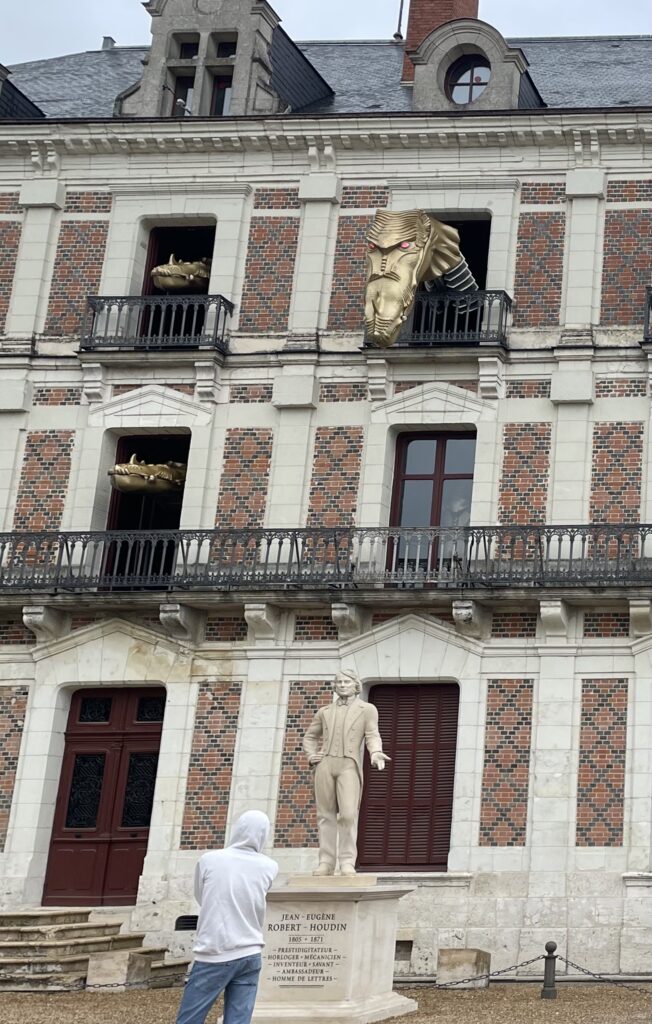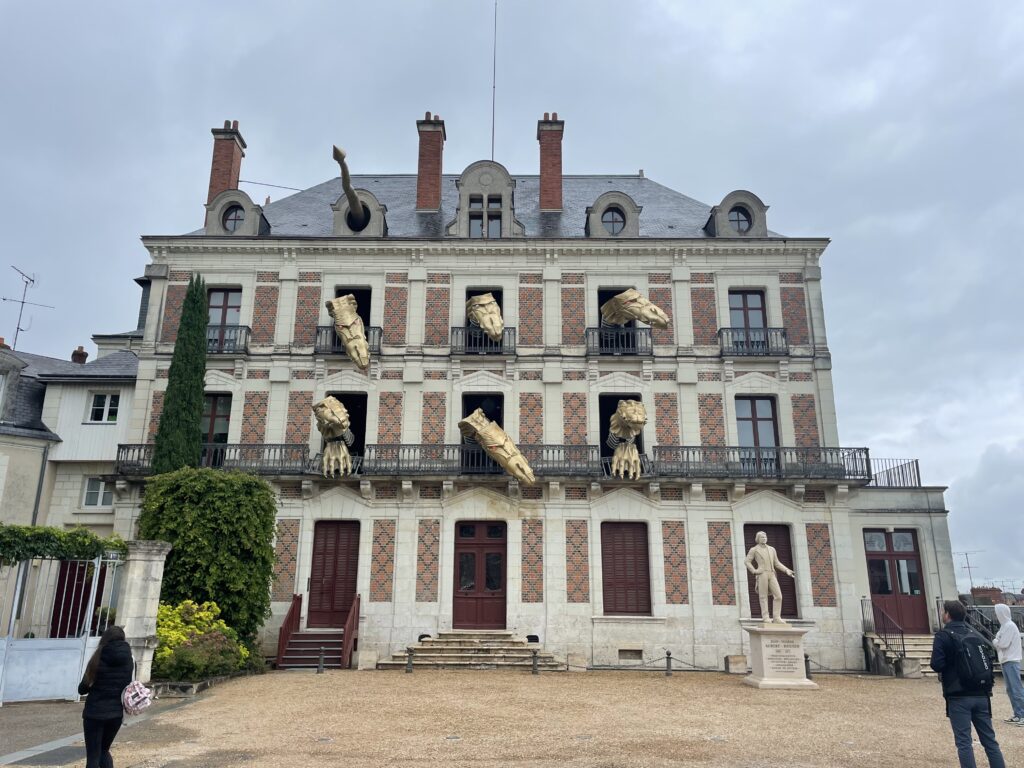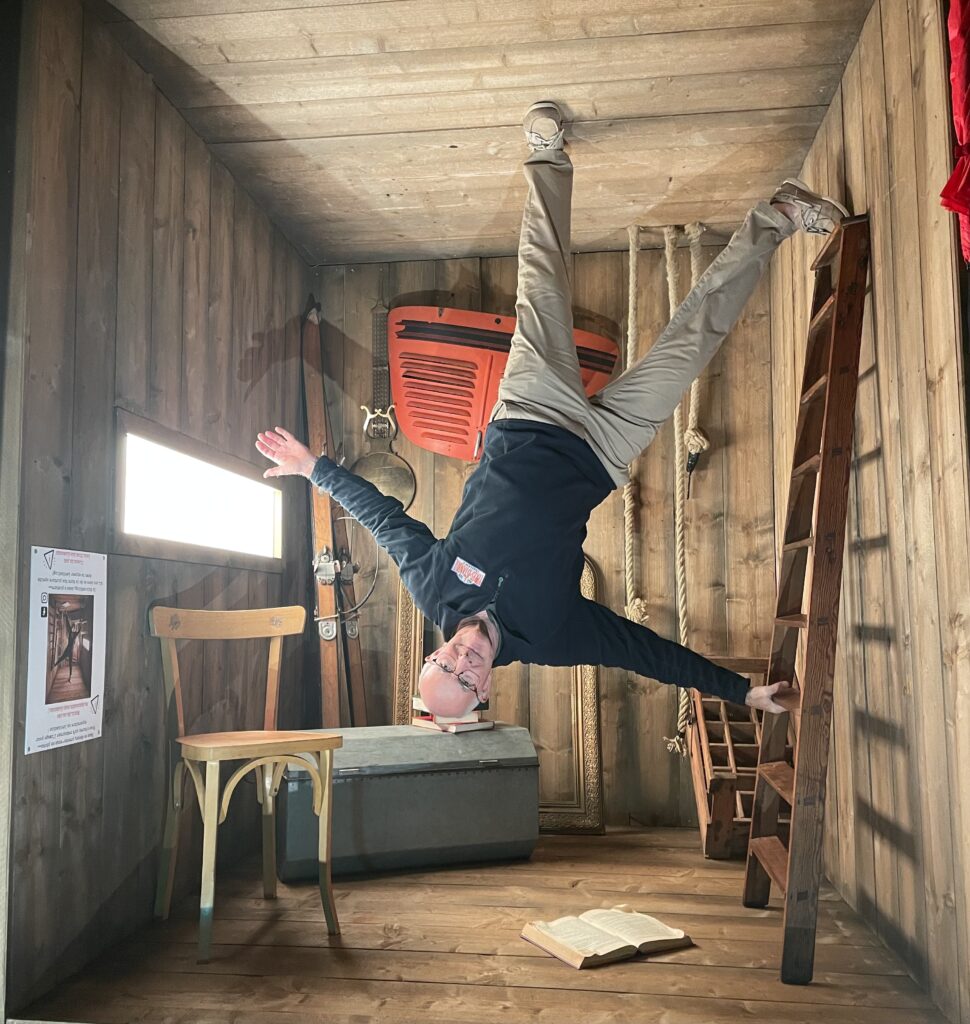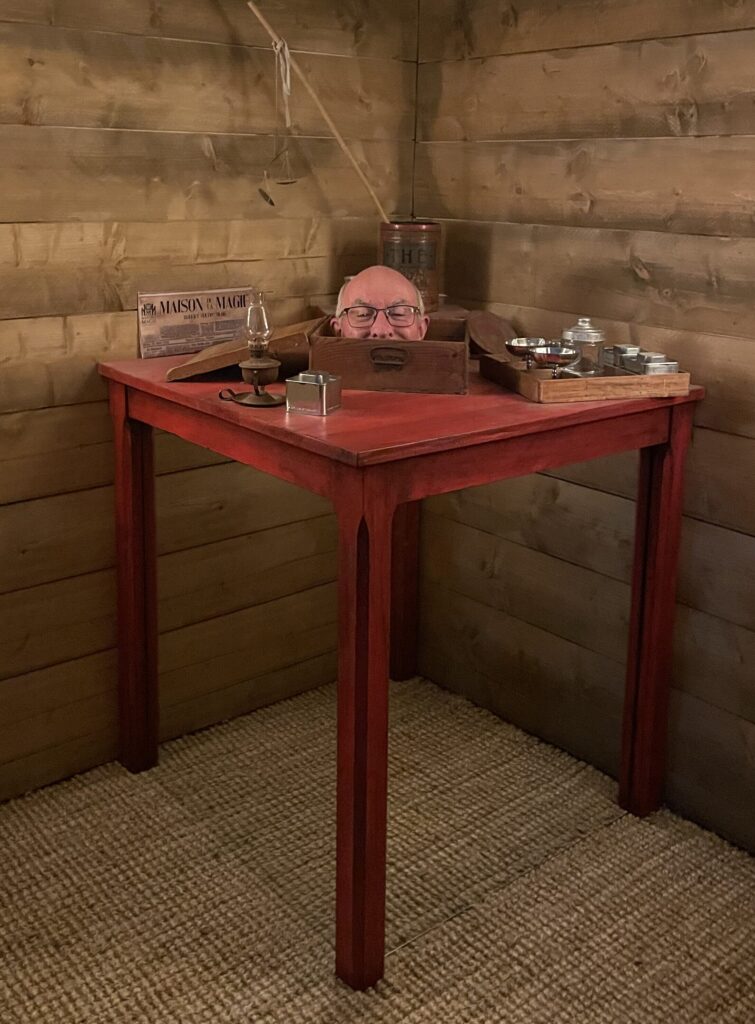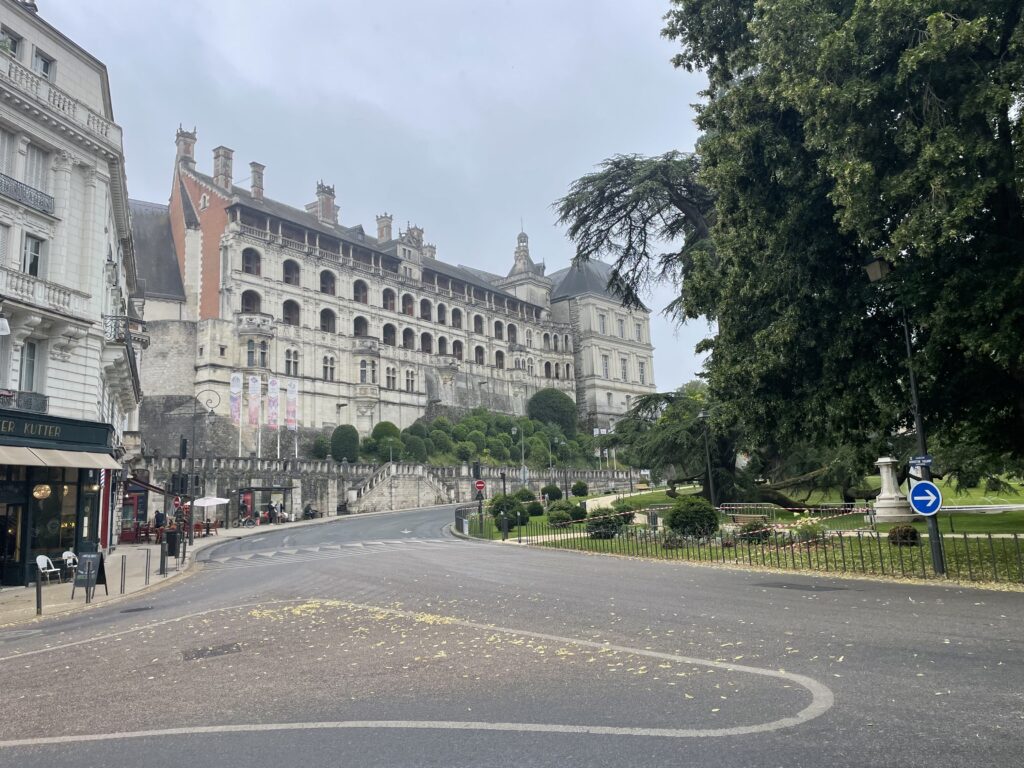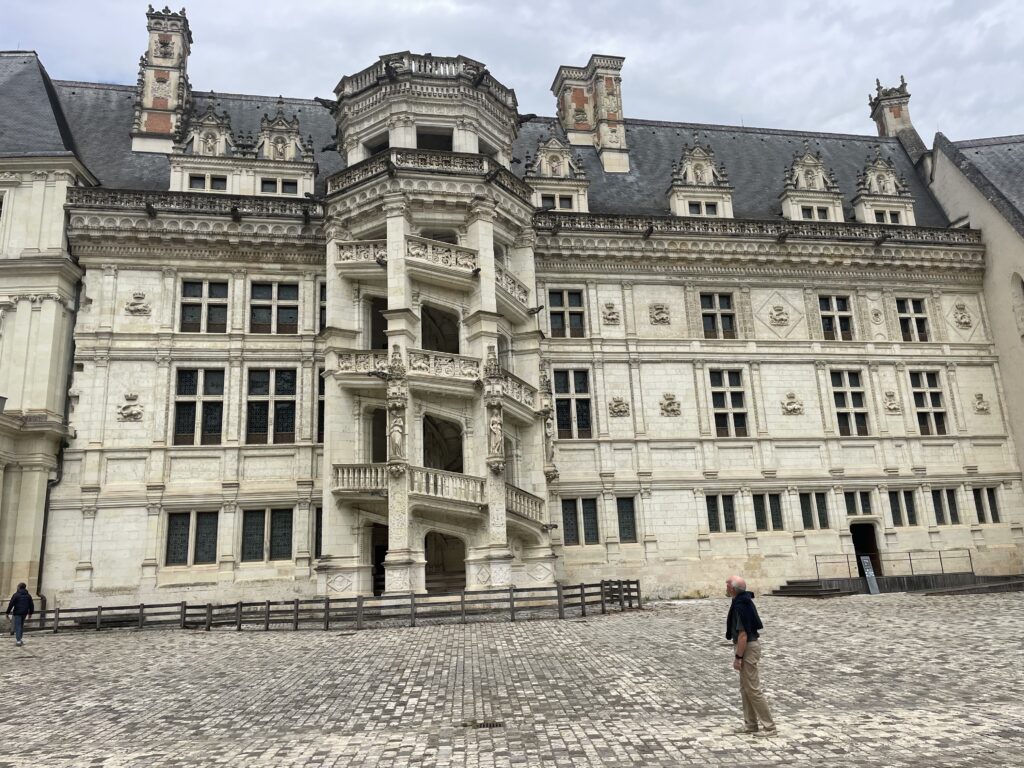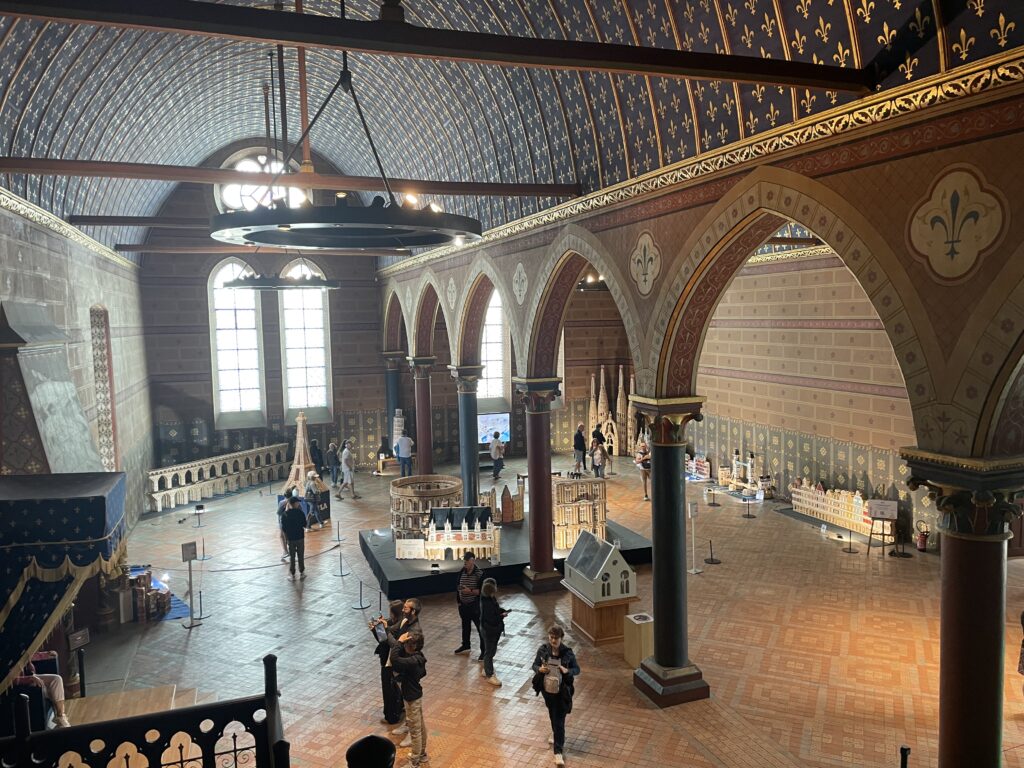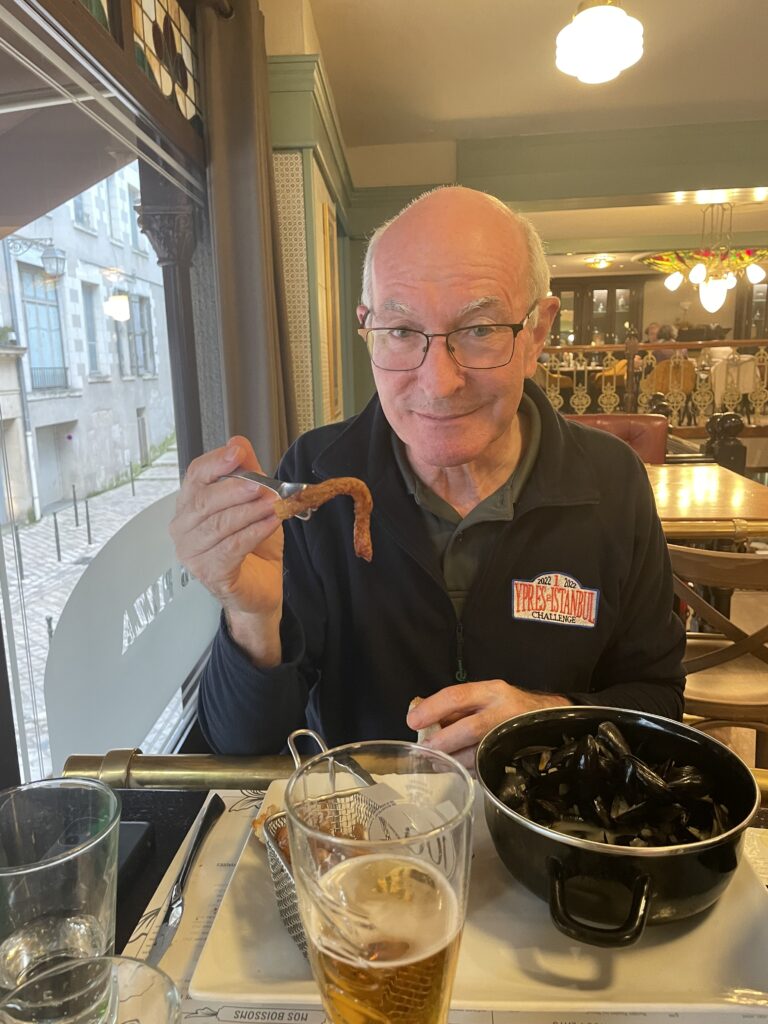In which Sid and Doris stay in a listed historical monument and have a day off with Henri lV and the magicians.
The Museum of Sologne has an exhibition showing how Romorantin changed in what historians call The Long 19th Century, 1789 to 1914. Though the railway and textile factories came lives in the countryside even up to 1940 were not so different from 100 years before. One model and explanation showed that farm workers lived in two roomed hovels with earth floors and paid for this accommodation by working on ‘richer’ peasants’ land.
The factories may have been hideous, but at least they kept the rain off. Either way the Normant textile factory was bought by Matra, which in turn has gone to a service industry while making things has moved to much more automated factories. And the shops in town are shuttered.
The museum has forest hides to stand in, looking out onto screens where the fruits of a thousand hours of filming the local wildlife are edited down to twenty minutes of wild boar, stags, eagles, jolly coloured dragonflies and cuckoos. Not quite enough time given to beavers, but a good effort to catch them not sleeping.
The ride to Blois is more than dull, against the wind on sapping surfaces alongside a firing range and with very little to gladden the eye. But there are happier moments, seeing the buildings change as we go north and west through Courmenin.
Which chimes very well with La Maison des Acrobates, our new home in Blois below, where there is a charming Majorcan welcome from our hosts.
You can see the acrobats and by their clothing (experts say) judge the house was built around 1470, though there have been some changes since.
First stop is the cathedral which in the tourist literature is placed alongside Orleans and Bourges but Doris awards quite low marks: only three levels, no transept and a rather clunky tower mixing late Gothic and bits of classicism.
Getting more appreciation, this clock which seems to use the edge of a neighbouring building as its gnomon.
Our hosts are kind enough to book us into Le Petit Honfleur for dinner. There are no food pictures, but if you go to Blois see if you can get in. All the ingredients are from less than 50 kilometres away and become a great meal. Sid’s view is you are less likely to get a dud meal in Italy, but this may require more research.
On Saturday morning breakfast can only be stretched so far before it is time to go out in the rain. Bizarrely there is a joint ticket for the Chateau and the House of Magic. This last celebrates the life of Robert Houdin, a 19th century watchmaker and illusionist who is rated as the founder of modern conjuring. Outside the HoM you can see a set of animated dragons which come out, growling fiercely but unexplainedly, every half an hour.
Inside the Museum has items and television clips from famous (apparently) conjurors and tells the story of Harry Weiss aka Houdini. There are also a few opportunities to plan with some illusions yourselves.
This passes the time until the show where a couple play out a dockside scene with disappearances, reappearances and transformations. It is not clear how all of these are done and they do ask for no photos so we can’t show you. S is amazed.
Back to the chateau. The chateau was built from the 1100s and it was here Joan of Arc (more joining up) came in 1429 to be blessed by the Bishop of Reims before leading her army against the English. Henri lV was the last king in residence. Louis Xlll gave the chateau to Gaston, Duke of Orleans his brother and heir.
Construction stopped when the Duke of Orleans was suddenly no longer heir to the French throne when his nephew, the future Louis XlV was born. So a building that had been the home to the kings of France became ruined and redundant as royalty moved to Versailles.
During the revolution it was vandalised and later scheduled for demolition but was reprieved and used as a barracks. Under the Third Republic more attention was paid to national heritage and in 1840 Prosper Merimee placed the chateau on a list of national monuments with attendant funding and expertise. (The name Prosper Merimee rang a bell with Sid. PM wrote the novella on which Bizet’s Carmen was based. You can do some humming if you like.)
So you can see many large rooms some of which have been redecorated in something like the style of the time when they were the bedrooms of kings or galleries of queens. But once a place has been occupied by soldiers for a few years much of the original decor will be gone.
The Renaissance staircase has been copied. Sid and Doris saw an excellent 1870s example at the Rothschilds Waddesdon Manor.
Here is the original.
You may remember Bothy McWeevil’s fascination with -est – the desire for any attraction to claim that is is the larg-est, old-est, long-est, etc. Blois Chateau has an excellent claim that it has the “largest remaining civilian Gothic room in France”.
After that excitement Saturday dinner was quite dull as the epidemic of detumescent French fries continues.
